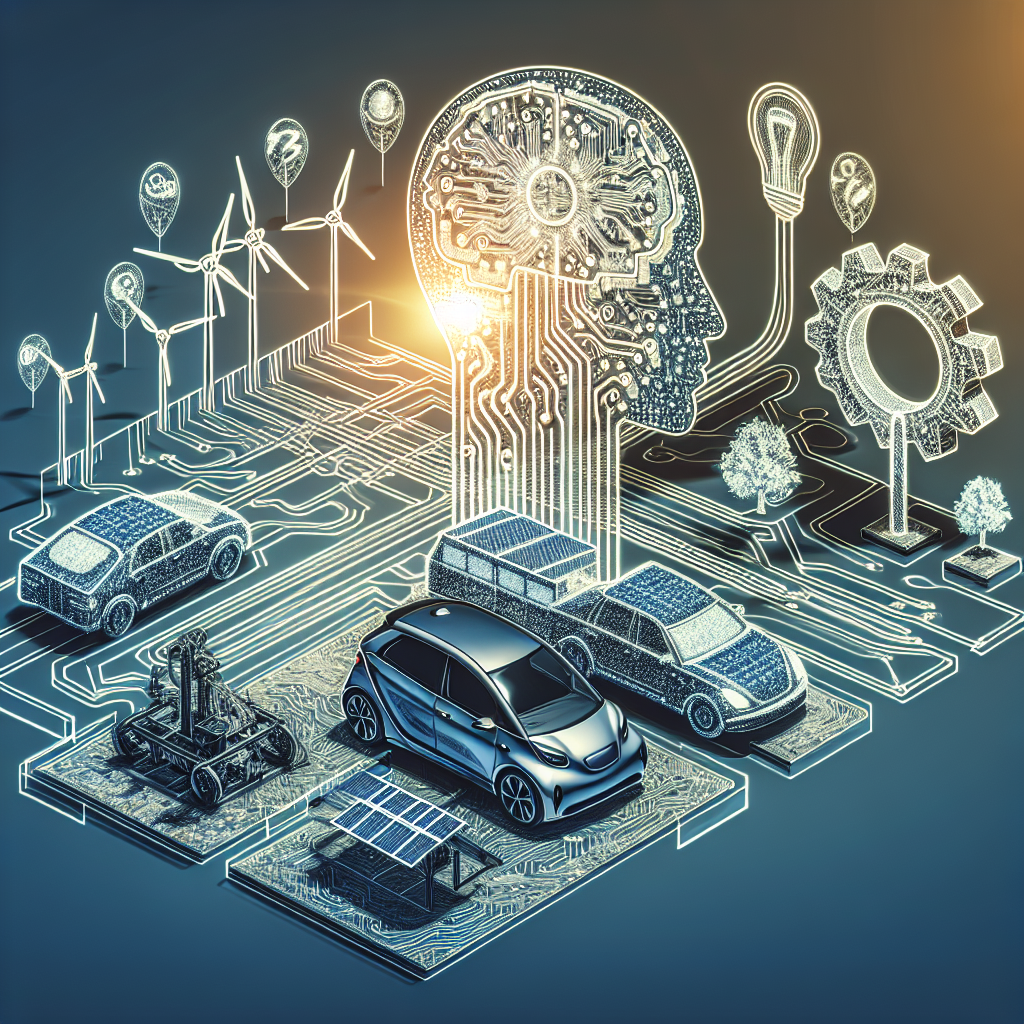The Intersection of AI and Electric Vehicles in Renewable Energy
In recent years, there has been a growing interest in the intersection of artificial intelligence (AI) and electric vehicles (EVs) in the renewable energy sector. As the world strives to reduce carbon emissions and transition to a more sustainable energy system, the integration of AI and EVs has emerged as a promising solution to optimize energy usage, improve grid stability, and accelerate the adoption of renewable energy sources.
AI technology has the potential to revolutionize the way we generate, store, and distribute energy. By leveraging machine learning algorithms and advanced analytics, AI can help manage the variability of renewable energy sources such as solar and wind power. This is particularly important as these sources are inherently intermittent and dependent on weather conditions.
One of the key applications of AI in the renewable energy sector is in the optimization of EV charging infrastructure. As the number of EVs on the road continues to increase, there is a growing need for smart charging solutions that can balance the demand for electricity with the availability of renewable energy. AI algorithms can predict energy demand patterns, optimize charging schedules, and minimize costs for both EV owners and grid operators.
Moreover, AI can also be used to enhance the integration of EVs into the grid as distributed energy resources. By enabling bidirectional communication between EVs and the grid, AI can help manage the flow of electricity and support grid stability. This is particularly important as EVs are expected to play a significant role in the transition to a decentralized energy system.
Another important application of AI in the intersection of EVs and renewable energy is in the development of vehicle-to-grid (V2G) technology. V2G enables EVs to store excess energy from the grid and feed it back when needed, effectively turning them into mobile energy storage units. AI algorithms can optimize the operation of V2G systems, maximize the value of stored energy, and support the integration of renewable energy sources into the grid.
In addition to optimizing energy usage and grid stability, AI can also play a key role in accelerating the adoption of renewable energy sources. By analyzing vast amounts of data, AI algorithms can identify trends, predict future energy needs, and optimize the deployment of renewable energy technologies. This can help reduce costs, increase efficiency, and drive innovation in the renewable energy sector.
Overall, the intersection of AI and EVs in renewable energy represents a significant opportunity to transform the way we produce and consume energy. By harnessing the power of AI, we can create a more sustainable and resilient energy system that is capable of supporting the transition to a low-carbon economy.
FAQs
Q: How can AI help optimize EV charging infrastructure?
A: AI algorithms can predict energy demand patterns, optimize charging schedules, and minimize costs for both EV owners and grid operators. By leveraging machine learning and advanced analytics, AI can balance the demand for electricity with the availability of renewable energy sources.
Q: What is vehicle-to-grid (V2G) technology?
A: V2G technology enables EVs to store excess energy from the grid and feed it back when needed, effectively turning them into mobile energy storage units. AI algorithms can optimize the operation of V2G systems, maximize the value of stored energy, and support the integration of renewable energy sources into the grid.
Q: How can AI accelerate the adoption of renewable energy sources?
A: By analyzing vast amounts of data, AI algorithms can identify trends, predict future energy needs, and optimize the deployment of renewable energy technologies. This can help reduce costs, increase efficiency, and drive innovation in the renewable energy sector.

